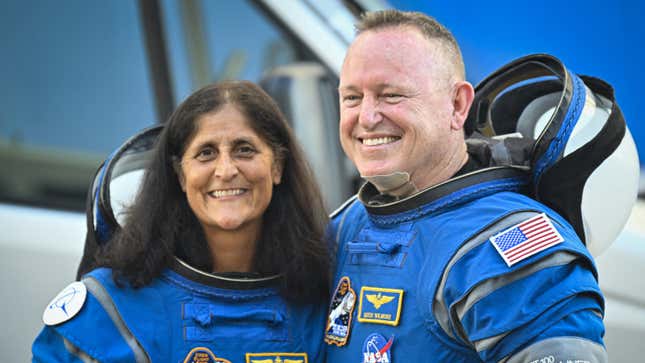Boeing’s first foray into manned house flight has been an unmitigated cock up. Starliner launched to the Worldwide Area Station with two astronauts onboard in June and landed again on Earth two months later with out them after points had been uncovered with the craft. Now, extra issues have surfaced throughout Starliner’s return, reaffirming NASA’s resolution to not belief it with the lives of Butch Wilmore and Suni Williams.
Starliner landed again on Earth this weekend, nearly three months later than it was initially scheduled to the touch again on terra firma. The delay in its return follows points that arose with the craft’s thrusters throughout it’s docking with the ISS, in addition to different issues that had been uncovered whereas the ship was in house.
The issues with Starliner left NASA with no alternative however to depart astronauts Wilmore and Williams up on the ISS as they didn’t consider it was secure bringing them residence on Starliner. As an alternative, they’ll hitch a trip residence on a SpaceX ship subsequent yr, leaving them in orbit for nearly eight months, as an alternative of the eight days initially deliberate.

That call is trying like a secure wager now, as Futurism stories that additional points arose with Starliner on its return to Earth this weekend:
Alerts on the capsule’s return had been combined. On the one hand, based on NASA’s industrial crew program supervisor Steve Stich, it pulled off a “bullseye touchdown.” On the opposite, the company admitted {that a} new thruster had failed throughout its descent. The capsule additionally skilled a short lived blackout of Starliner’s steering system throughout reentry.
It’s a clumsy scenario for the house company: would Starliner have been capable of ferry NASA’s lacking crew members ultimately?
“I feel we made the appropriate resolution to not have Butch and Suni on board,” Stich informed reporters on Saturday. “All of us really feel completely satisfied concerning the profitable touchdown. However then there’s a chunk of us, all of us, that we want it will have been the best way we had deliberate it.”
Questions arose about Starliner’s situation after 5 out of 28 thrusters failed when it docked with the ISS again in June. Within the months that adopted, engineers found that the failure was as a result of overheating in sure components, which isn’t a great look on a rocket engine that *checks notes* burns stuff as a part of its job.

Due to this and the intense situations the craft would expertise throughout re-entry, NASA determined to not convey it again to Earth with Wilmore and Williams onboard, regardless of Boeing’s claims that it will be secure. This differing opinion is barely highlighting the chasm that exists between Boeing and NASA proper now, stories Ars Technica:
Three NASA managers, together with Stich, took questions from reporters in a press convention early Saturday following Starliner’s touchdown. Two Boeing officers had been additionally presupposed to be on the panel, however they canceled on the final minute. Boeing didn’t clarify their absence, and the corporate has not made any officers out there to reply questions since NASA selected to finish the Starliner take a look at flight with out the crew aboard.
“We view the info and the uncertainty that’s there otherwise than Boeing does,” mentioned Jim Free, NASA’s affiliate administrator, in an August 24 press convention asserting the company’s resolution on tips on how to finish the Starliner take a look at flight. It’s uncommon for NASA officers to publicly talk about how their opinions differ from these of their contractors.
Joel Montalbano, NASA’s deputy affiliate administrator for house operations, mentioned Saturday that Boeing deferred to the company to debate the Starliner mission within the post-landing press convention.
NASA was scheduled to function additional Starliner launches in collaboration with Boeing, with the subsequent at present tentatively scheduled for August 2025. Nevertheless, there’s no certainty over that now as questions swirl about Boeing’s ambitions for house flight going forwards.


